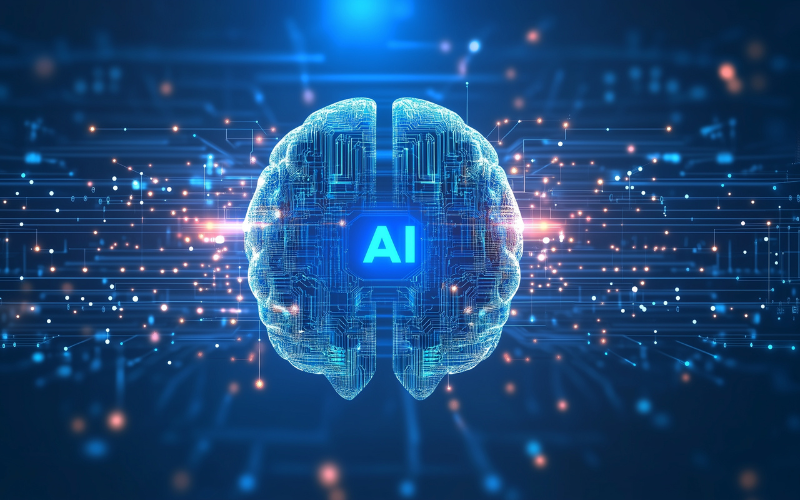Across the world, artificial intelligence is changing how people are creating news, presenting it, and delivering it. Therefore, from writing articles to producing news videos, AI tools at entering every part of the media. The future of AI in Indian media and publishing is shaping these changes. Also, India is adopting AI for faster news production and delivery. The recent rise of AI-generated news anchors is gaining attention. These are not human journalists but digital avatars that speak, look, and act like people. In this blog, you will get the answer to the question, Are Indian newsrooms ready for AI anchors? It’s a big step that comes with both new possibilities and additional worries.
What are AI anchors?
AI anchors are digital news readers powered by computer programs. And these programs use technology like natural language processing or text-to-speech and 3D modelling to create avatars that will read the news aloud. As a result, these can speak in distinct tones, move their facial features, and maintain eye contact all without being human. Countries like China and South Korea are already introducing AI anchors into their news channels. In India, Sana, the AI anchor launched by India today, was making headlines as the first of its kind. Moreover, a series of news stories, both in English and Hindi. Her looks and voice are entirely dependent on the software. As a result, this shows how fast the future of AI in Indian media and publishing is becoming real.

The role of AI in Indian media today
Indian newsrooms already use it for many tasks. Because it helps with content selection, suggesting stories to publish based on audience interest. Also, it checks facts quickly and supports real-time data analysis. Therefore, AI is helping the digital platform to understand articles that perform well and what topics are popular. News apps and websites are using AI to recommend content to users. Moreover, AI generators’ new summaries and automatic headlines are now a part of some media workflows. Many news channels also use AI for social media post video editing and even subtitles. This change is showing how AI is becoming important day by day. The future of AI in Indian media publishing is not a distant idea; it’s already here.
Benefits of AI anchors for Indian newsrooms
AI anchor is offering many advantages. Firstly, they are available all the time. They can read News 24 hours a day, 7 days a week without needing rest. This is useful for continuous news updates and breaking stories for late-night reports. Secondly, the AI can speak many languages. India has many regional languages, and AI avatars have proper training to speak them all. This helps the media company to connect with the local audience in their language.
Thirdly, the AI and curve can reduce long-term costs. Once developed, they can be used to deliver thousands of news clips at low cost. Once developed, they can be used to deliver thousands of news clips at low cost. This is useful for covering areas where sending human teams is expensive or difficult. AI can also make it easier to create video news from text, reaching more people across different platforms like YouTube and other OTT apps.
Read more: Future Of AI In Indian Content Word
Challenges and concerns
Even with all the benefits, AI anchors bring serious challenges. One concern is trust. Many viewers feel more connected to human anchors just because of the human tone, emotion, and expression they build up while reporting the news. On the other hand, AI anchors may feel robotic or personal. Another issue is the risk of deep fakes. People misuse this to create fake news or spread wrong information. If an AI is reading fake content, then they will be no one to blame. Therefore, that accountability is still not clear. Also, the rise of AI may lead to unemployment. News anchors, editors, and some reporters may see fewer opportunities if the automation increases. It’s important to think about how to balance technology with employment.
Audience reception in India
India is a country of many languages, cultures, and viewing habits. So the reaction to the AI anchor can be mixed. Some young people will like the idea of modern and technologically advanced news delivery. Others feel that disconnection from a screen avatar that doesn’t show real emotions. In many parts of India, the news is not just about information, it’s about the connection. So, people follow their favourite and curse because they trust them. Also, replacing that human presence with a virtual face could reduce that emotional connection. Also, regional viewers may have concerns about how well an AI anchor understands local language, culture, and tone. These are important in a country as diverse as India.
The future Outlook
AI is powerful, but not perfect. The best way forward is to use AI as a tool and not a full replacement. Many experts believe that humans and curtains can walk together. For example, AI anchors can handle sort updates, while human anchors cover major 2-reason interviews. In this way, newsrooms get the speed of AI and trust the humans. Therefore, the makers can offer a better experience to the viewers. Journalism schools and media companies should now start training to use AI. So, learning how to write for AI or edit content for virtual presenters can become a new career skill. Using AI also means understanding its limits. It cannot ask deep questions or show empathy, so human judgment is always necessary.
AI anchors are not there to take over journalism, but they can become a part of it. The future of AI in Indian media and publishing depends on careful planning. If you are using it in the right way, then AI can support faster, wider, and more local news coverage. But media houses must also protect the values of journalism, like truth, trust, and responsibility. Human anchors can build a connection, and that technology alone can not replace. Moreover, brands like Infocom ABP are in a unique position to shape their future. As leaders in digital content and media innovation, they can lead India’s journey into responsible AI-powered journalism.

